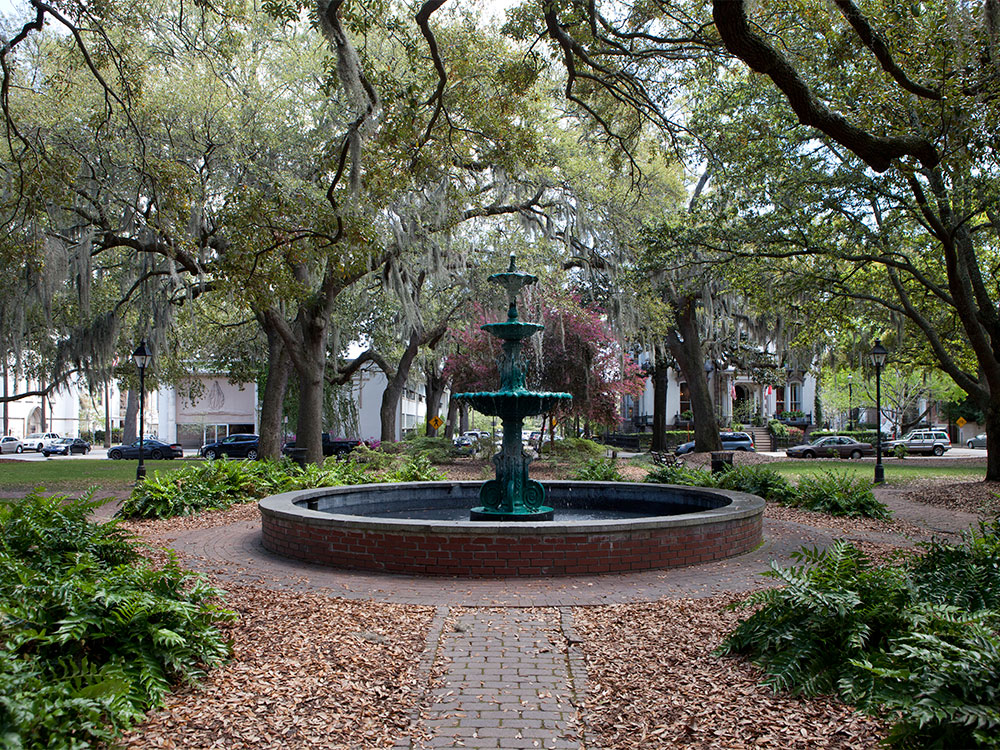Math Lesson | 10 Parks that Changed America Curriculum
Math Lesson
Ratios and park planning

Overview
In this lesson, students will determine the ratio of local parks to city or town blocks.
Time: 1 period
Standards
This lesson addresses selected standards from the Common Core mathematics standards.
- Understand ratio concepts and use ratio reasoning to solve problems.
CCSS.MATH.CONTENT.6.RPA1
Understand the concept of a ratio and use ratio language to describe a ratio relationship between two quantities. - Geometry, Expressing Geometric Properties with Equations
CCSS.MATH.CONTENT.HSG.GPE.B.6
Find the point on a directed line segment between two given points that partitions the segment in a given ratio.
Preparation
To prepare to teach this lesson, teachers should:
- Watch the Squares of Savannah segment from the PBS special, 10 Parks that Changed America, on DVD or online.
- Review the lesson plan.
- Download and print copies of maps of Savannah’s squares.
- Print out copies of maps of your own community.
- Print out copies of the worksheet
Lesson
Materials:
- Copies of map of the Historic Squares of Savannah
- Rulers
- Worksheets
- Copies of map of your town or city
Period 1
- Watch the segment about the Squares of Savannah from the PBS Special 10 Parks that Changed America. Discuss students’ ideas about how the squares of Savannah helped organize the city and helped it grow. Do students find any significance in Oglethorpe’s choice of a square as the unit, rather than a rectangle? (The square could signify democracy and egalitarianism that Oglethorpe was striving to promote in the town.) Ask students to think about their own city or town. Are there any public plazas, parks, squares, etc? Have students describe the features of their own city or town.
- Tell them that they are going to analyze Oglethorpe’s plan from a mathematical perspective.
- Distribute Savannah maps/plans, rulers, maps of your own town or city, and worksheets. Students share their answers and analyze results.
Additional Resources
Books
- Spatial Mathematics: Theory and Practice Through Mapping by Sandra Lach Arlinghaus and Joseph J. Kerski
- The Squares: An Introduction to Savannah by Edward Chan Sieg
Online Sources
- Savannah’s Squares
www.savannah.com/savannahs-historic-squares/
For Further Study
This Math lesson can be extended to other subjects or paired with other 10 Parks that Changed America lessons to create the following interdisciplinary connections:
- Art: Make a set of postcards that depicts some of the squares of Savannah. You may use images from the www.savannah.com/savannahs-historic-squares/ website
- Social Studies: Use the www.savannah.com/savannahs-historic-squares/ website to learn the history behind each square’s name
- Science: With so many open spaces in Savannah, there are environmental benefits to the residents. Brainstorm a list of environmental and health benefits to living near a park or open space.
- ELA: Imagine you were to meet James Oglethorpe. What would you like to ask him about his plan for Savannah? Draw up a list of interview questions. In another scenario, you may imagine that James Oglethorpe has time-traveled to the present day. How do you think he would assess Savannah? Write an essay in James Oglethorpe’s voice describing his view of Savannah and how his plan worked out.

